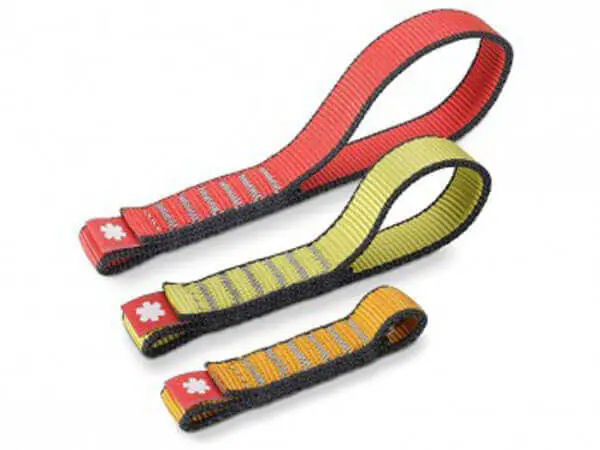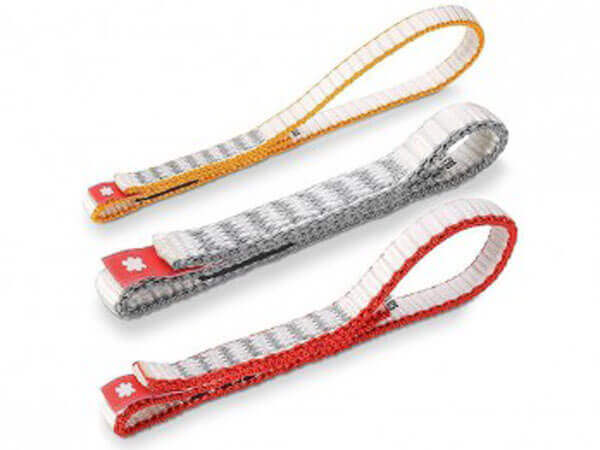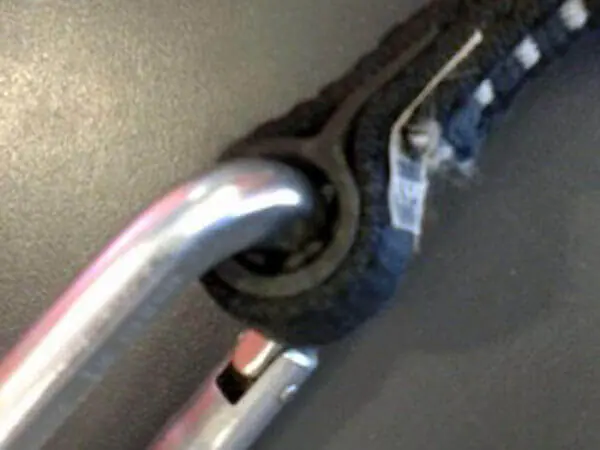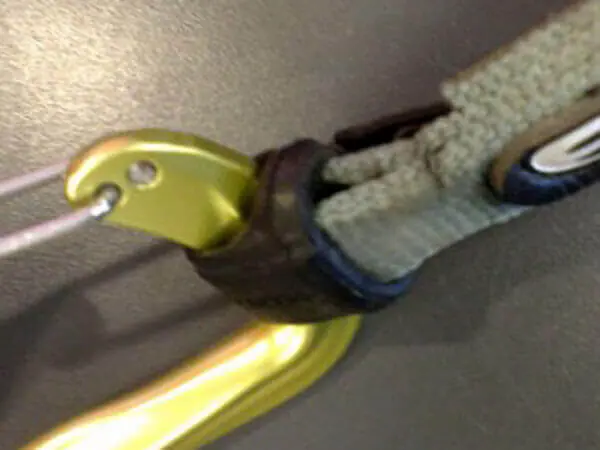A quickdraw is an indispensable piece of gear, as it allows us climbers to connect our rope to protection, but have you ever wondered what the difference was between the various options? I mean, there’s tons of different quickdraws to choose from! How are we supposed to keep track of them all?
Fortunately, we’re here to shed some light on the topic. In the following, we’ll discuss what a quickdraw is, what it’s made of, the different types and what you should keep in mind when buying and using quickdraws.
What is a quickdraw?
A quickdraw is a piece of equipment used to connect the rope to protection. You may be familiar with the fixed quickdraws from your climbing gym. You know, the ones that are hanging on the wall. Even though you’ll often find quickdraws left behind on some routes outdoors as well, climbers are usually responsible for bringing their own (and removing them when they leave). Quickdraws consist of two carabiners, which are connected to each other by means of a semi-rigid material called a sling.
The sling’s material
A small, but significant difference between the different quickdraws lies in the material used for the sling. This is usually either polyamide or polyethylene. You’ll know polyamide by the fact that the material is dyed and the slings are wider (11-16mm). Polyamide is also known as nylon. If you’d like to know more about Dyneema and nylon, check out this blog post.
In climbing, polyethylene is usually linked to the name Dyneema. Slings constructed from this material are very thin (8-11mm), and the fibres are so smooth that they can’t be dyed. Thus, these slings tend to be almost completely white and are combined with a coloured section made up of polyamide.


In general, these slings have a strength of 22 kN. Polyethylene (Dyneema) slings are lighter due to the reduced width. Despite the lower weight of Dyneema, polyamide slings remain quite popular and are often used as a “panic quickdraw” that is easier to grab hold of than the thinner Dyneema sling.
Length of the sling
Quickdraws are available in various lengths. The different lengths are there to prevent the carabiner from lying up against the rock (higher risk of breaking). Plus, using quickdraws allows you to keep the path of your ropes straight if your bolts are directly above each other. This helps to reduce rope drag resulting in an overall more fluid climb. Longer quickdraws can be particularly useful on multi-pitch climbs/alpine climbing.
Carabiners
Another important thing to consider when it comes to quickdraws is that fact that the carabiners can vary greatly in terms of their strength. The strength of carabiners is rated in three directions, namely lengthwise (major axis), sideways (minor axis) and while open. In order for a carabiner to be in accordance with the standards for strength, it has to have a major-axis strength of 20 kN and a gate-open and minor-axis of “only” 7 kN.
The kN ratings may seem excessive, but it is a life or death situation, so distributing a load on the gate of the carabiner should definitely be avoided. Cross-loading is pretty much impossible on a quickdraw because the rope-end carabiner is fixed to the sling.


This is achieved by sewing or fitting the sling with a rubber keeper. It is important that the rubber keeper and the sling are connected to the carabiner (see image below)!


A carabiner being loaded with the gate open can occur as a result of the whiplash effect. If the carabiner hits a rock face in the event of a fall, the gate will open for a split second due to inertia. This risk can be reduced by using wire-gate carabiners. In contrast to solid or full gate carabiners, wire-gate carabiners have less mass and lower inertia, thereby reducing the risk of whiplash.
Straight or bent
Straight or bent? Both! Bent-gate carabiners have a slightly curved gate, which makes clipping a rope very easy. Thus, you’ll always find these kind of carabiners at the rope-end of quickdraws. The straight-gate carabiners are reserved for the wall end. If a quickdraw only has straight-gate carabiners, the end with the keeper will determine which carabiner is for the rope end.
Noseless
The fact that a carabiner doesn’t have a sense of smell goes without saying. Still, the fact remains that many have a nose, which can get in the way in certain situations.
Due to the multitude of both disadvantages and solutions to these problems, we’ve decided to dedicate an entire blog post to the topic. You can find it here.
Which quickdraw to use when

Basically all quickdraws are suitable for beginning rock and sport climbers. But, always be sure to have one quickdraw with you with a slightly longer sling. A set consisting of 8-10 quickdraws will be plenty for most routes. For longer routes, it could be a good idea to have a couple more. But, as a general rule, you should have a couple of extra quickdraws – just in case. And don’t forget take some along if you plan on using them as part of your anchor as well.
The best quickdraws for multi-pitch climbs are those that have noseless carabiners with relatively large gate openings, as these are compatible with thick double ropes as well. It’s helpful to have some quickdraws with longer slings as well.
When ice climbing, you should always use wire-gate carabiners because these aren’t as likely to freeze up in cold temperatures. Other than that, the rules are pretty much the same as those for sport climbing. Quickdraws for ice climbing can have a shock absorber instead of a sling, which serves to significantly reduce the impact force on dubious protection in the event of a fall.
It is incredibly importance to go with the highest gate-open strength possible.
A quickdraw’s worst enemy
Frequent use will certainly leave its mark on a quickdraw. The webbing may be used for a maximum of 10 years, but it can wear out much earlier, especially if the sling has rubbed up against numerous rock faces. The bit that shows the most wear and tear is where the carabiner and the sling are attached. It is thus extremely important to check the seams on a regular basis.
The rope-end carabiner can suffer quite a bit of wear and tear as well. If you happen to find a sharp edge on your biner, get it replaced immediately.
If a quickdraw is hanging from a bolt hanger during a fall, sharp edges can take shape. If this happens, use it as your wall-end carabiner so that your rope doesn’t suffer as a result. This brings me to another point: You should never swap the rope-end biner for the wall-end one. They are forever damned to stay in their respective places 🙂
Fixed quickdraws
As mentioned before, fixed quickdraws are those that have been left behind on a route or that are permanently fixed to the wall at the climbing gym. As convenient as they may be, it can be dangerous to use them. You should always look out for any signs of wear and tear. Of course, the ones at the climbing gym are checked regularly, but those ‘out in the wild’, as it were, are not, so it’s always a good idea to have a good, close look before using them.






